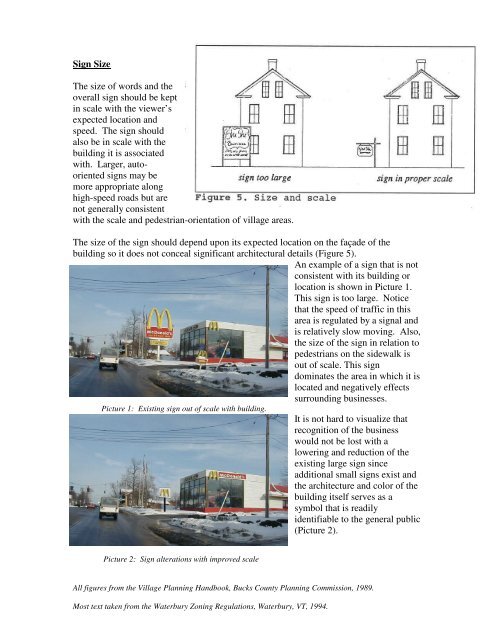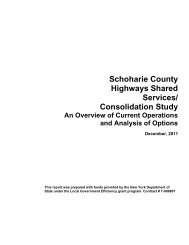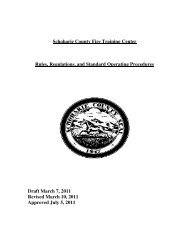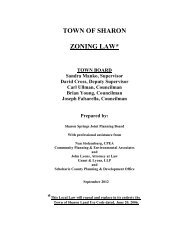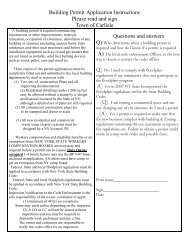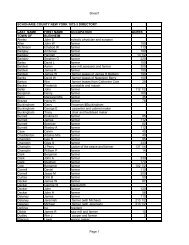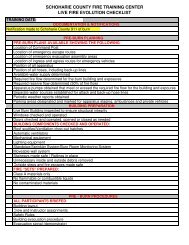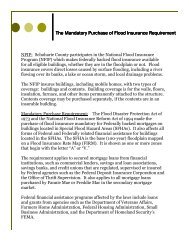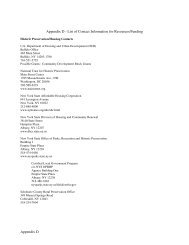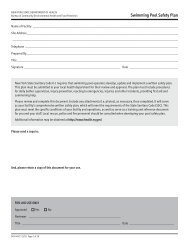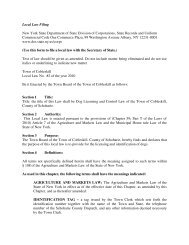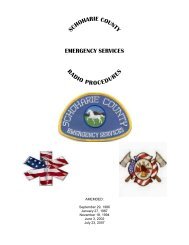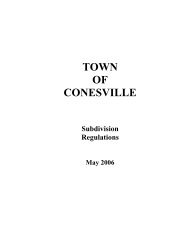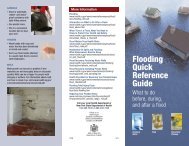Appendix C Sign Design Guidelines Sign Types ... - Schoharie County
Appendix C Sign Design Guidelines Sign Types ... - Schoharie County
Appendix C Sign Design Guidelines Sign Types ... - Schoharie County
You also want an ePaper? Increase the reach of your titles
YUMPU automatically turns print PDFs into web optimized ePapers that Google loves.
<strong>Sign</strong> SizeThe size of words and theoverall sign should be keptin scale with the viewer’sexpected location andspeed. The sign shouldalso be in scale with thebuilding it is associatedwith. Larger, autoorientedsigns may bemore appropriate alonghigh-speed roads but arenot generally consistentwith the scale and pedestrian-orientation of village areas.The size of the sign should depend upon its expected location on the façade of thebuilding so it does not conceal significant architectural details (Figure 5).An example of a sign that is notconsistent with its building orlocation is shown in Picture 1.This sign is too large. Noticethat the speed of traffic in thisarea is regulated by a signal andis relatively slow moving. Also,the size of the sign in relation topedestrians on the sidewalk isout of scale. This signdominates the area in which it islocated and negatively effectssurrounding businesses.Picture 1: Existing sign out of scale with building.It is not hard to visualize thatrecognition of the businesswould not be lost with alowering and reduction of theexisting large sign sinceadditional small signs exist andthe architecture and color of thebuilding itself serves as asymbol that is readilyidentifiable to the general public(Picture 2).Picture 2: <strong>Sign</strong> alterations with improved scaleAll figures from the Village Planning Handbook, Bucks <strong>County</strong> Planning Commission, 1989.Most text taken from the Waterbury Zoning Regulations, Waterbury, VT, 1994.


